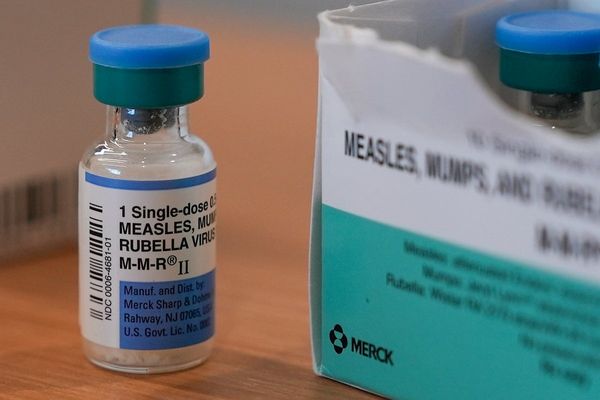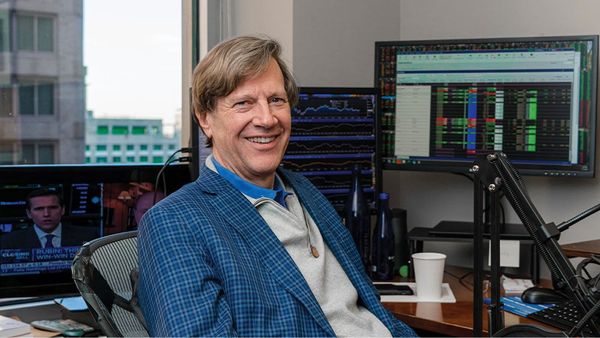The markets finally woke up to reality in February that inflation isn't retreating as fast as expected. Both stock and bond markets underperformed as interest rates surged. Despite a sea of negative returns, a few of the best ETFs and mutual funds showed strength.
The 10-year U.S. Treasury yield spiked 40 basis points, ending the month just below 4%. Short-term rates also rose as the Federal Reserve raised its funds rate by 25 basis points. Major indexes fell, with the S&P 500 shedding 2.44%, the Dow Industrials 4.19% and Nasdaq composite 1%. Foreign stock markets did better with the MSCI EAFE index advancing 0.62%.
"Earnings season was a big driver for the markets in February overall," said Aaron Dunn, vice president of Eaton Vance Management and manager of Eaton Vance Focused Value mutual fund (EIFVX). "We also had some inflationary readings (and) job market readings which came in hotter than people were hoping. And so, what that's done is really impacted the rate outlook."
U.S. diversified equity funds declined 2.14% during the month, slashing their yearly gains to 4.92%, according to Refinitiv Lipper data. Equity leverage, specialty diversified equity and multi-cap value funds were among the worst performers. Dedicated short bias funds and alternative equity market neutral funds were the only mutual fund categories with positive returns.
Best ETFs: Nowhere To Hide
No sector was spared by the decline. However, among the best funds with the lowest declines were science and technology, down 1%, and commodities energy, off 0.51%. Precious metals equity, commodities base metals and basic materials funds gave up most of their prior month's gains and then some.
"In February, gold fell about 5.3%, the worst monthly loss in over a year and half," said Jason Teed, co-portfolio manager of the Gold Bullion Strategy Fund (QGLDX) and director of research at Flexible Plan Investments. "Gold had experienced an earlier run-up in January, but gave much of that back in the first couple of days in February."
The decline in the precious metal was further exacerbated by higher inflation readings. Until inflation declines more consistently, gold may continue facing headwinds, he said.
"The longer the Fed has to fight inflation, the higher a risk for a 'hard landing' for the economy," noted Teed. "Should such a hard landing occur, it's likely that headwinds for the metal would rapidly turn to tailwinds, and we'd see upward movement as the metal tends to be an investor's safe-haven in times of market turmoil."
Finding The Best ETFs
On the ETF front, things didn't look a whole lot better. Top performing U.S. diversified stock ETFs posted mildly negative returns in February. Among the best ETFs were ProShares Russell 2000 Dividend Growers, Invesco Nasdaq 100 and Invesco QQQ Trust, all down around 0.3%.
These declines, however, did not markedly detract from their year-to-date performance. Many of the best ETFs still showed double-digit or high single-digit returns for the year. The top three were ARK Innovation, Renaissance IPO and Invesco S&P 500 High Beta.
Among sector ETFs, several achieved stellar returns. First Trust Nasdaq Cybersecurity, Global X Cybersecurity and First Trust Nasdaq-100-Tech Sector rose between 1.7% and 2% in February. They're up 6.51%, 8.67% and 14.8%, respectively, this year.
And the big winners for year-to-date performance are all ARK ETFs: ARK Next Generation Internet, ARK Fintech Innovation and ARK Autonomous Technology and Robotics, up between 20% and 31%.
Going Global
Several global ETFs did well in February. Those include Breakwave Dry Bulk Shipping, Global X MSCI Greece and iShares MSCI Turkey, surging 16%, 7% and 4.7%, respectively. GREK is up 22.22% this year and is the best ETF in the foreign stock category.
"We had a warm winter and Europe had a warm winter," said Dunn. "That sort of took the energy challenges off the table. … That's a tailwind for the market for at least the first half of the year."
Dunn warns against being tempted to go back to what the market was before 2022. After studying investors' behavioral bias, he said that after a sharp correction in the market like we saw in 2022, investors tend to reengage back to the sectors that did well.
However, the fundamentals have shifted and interest rates are higher: "Risk has a price today," he said. This means that investors can invest in lower-risk securities and earn 4% without having to take on excessive risk.
Looking For Bright Spots With Best ETFs
Dunn therefore favors cyclical businesses without much debt so that they can participate in the economic recovery without bearing the risk of the higher interest rates. Those include energy, industrials and financials.
With the "yields that have moved higher, we think the opportunities in fixed income have gotten better," said Lawrence Gillum, fixed income strategist at LPL Financial. He likes core fixed income sectors such as U.S. Treasuries, Agency mortgage-backed securities and investment grade corporates. "These are sectors that have yields that we haven't seen in quite some time."
For most bond funds, negative returns were the name of the game as rates rose in February. General domestic taxable funds fell an average 1.51% in February, trimming their yearly returns to 1.61%. Only loan participation, specialty fixed income, and ultrashort obligations funds posted mildly positive returns. So far this year, however, bond fund performance remains solid.
Despite this, some of the best bond ETFs included Simplify Interest Rate Hedge, up 8.46% and FolioBeyond Rising Rates, up 6.1%.
Watching The Fed
February saw some weakness in bonds "on the back of renewed positive growth expectations momentum, and then therefore renewed expectations for higher-for-longer Fed activity," said Tony Rodriguez, head of fixed income strategy at Nuveen.
He predicts a 50-50 chance for a soft landing that would entail a cyclical slowdown in growth without falling into a recession, and a short shallow recession in the fourth quarter or even early 2024.
Because of this backdrop, some headwinds for risk assets remain. That said, he believes it's "wise to begin to have exposure in a diversified manner to sectors." Investors should keep some dry powder to be ready to take advantage of opportunities, he pointed out. Also, they should be diversified and focus on the higher-quality segments within fixed income.
He likes financials, preferred stocks, high-quality investment grade and high yield, as well as select emerging markets. He favors mortgages over Treasuries.
"2023 is not going to be nearly as negative for the fixed income market as 2022," said Rodriguez. "But the opportunity is in broad-based, well diversified fixed income portfolios as opposed to highly concentrated portfolios."










